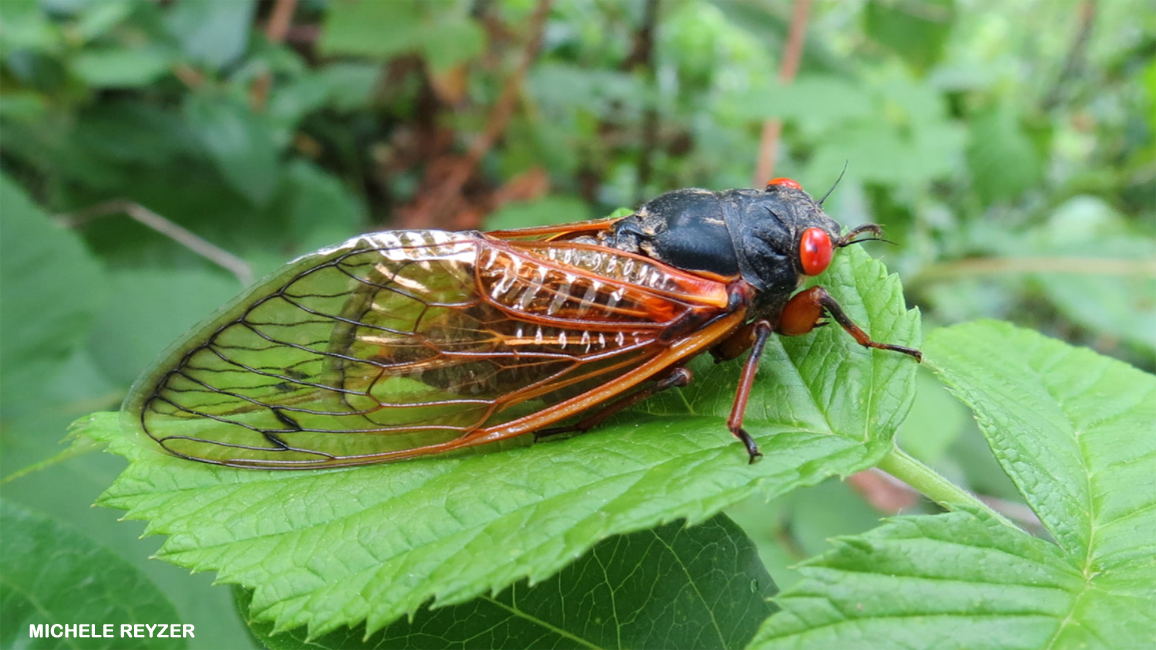
Cicadas
By Ellen LambethEarlier this summer, some lucky people got to attend the world’s best buzzy bug concert—for free!

The main event happened in treetops only in certain parts of the eastern United States (see map). If you were in the right place at the right time, you may even have met a bunch of these big-eyed musicians in person. The insects were cicadas (sih-KAYduhz)—periodical cicadas, to be exact. (Periodical means “happening every so often.”)
There are several broods (groups) of these cicadas. Each brood is made up of young cicadas that live underground until it’s time to emerge, or come out. Some broods emerge every 13 years; others, every 17 years. And each brood comes out all at once according to its time and location. This is the year of the 17-year Brood X. (“X” is the Roman numeral for 10.)
This summer, members of Brood X emerged by the billions after living underground as nymphs (immature insects) since 2004. Once above ground, they shed their skins and live for a brief season of singing and mating, egg-laying, and then dying. Before summer’s end, the eggs will hatch, and the tiny new nymphs will drop to the ground and dig into the dirt. There, they’ll suck on tender roots and grow until 2038, when the process starts all over again.
If you weren’t lucky enough to catch this live performance in person, check it out on these pages!

THE MAGIC BEGINS
Once a cicada nymph crawls out of the ground and up a tree, it begins to break out of its skin. Out comes an adult cicada (1). The new adult’s body is white and soft. Its old brown nymph skin is split open and left behind. Slowly, the adult pumps up its wings (2). Even after the wings reach their full size, the new adult cicada waits for hours while its new skin hardens (3).
READY TO PARTY
The adult cicada’s skin toughens and turns black. Its wings become stiff and strong. Finally, the bug takes to the air. If it’s a male, he will land somewhere and start singing his buzzy song to attract a female. If it’s a female, she will mate with a male. Then she’ll slice into a tender tree branch and lay her eggs inside the slit.
CRUNCH
This lucky cardinal just grabbed a cicada snack. It’s not the only hungry creature taking advantage of the mega food fest. Many others—including frogs, bats, foxes, and squirrels—gorge on this bug bounty.
THE EVERY YEAR CICADA
There are more than 3,000 species of cicadas around the world. The periodical cicadas in this story belong to a few species that live only in the eastern United States. But other species come out each year in areas all across the country. The green dog day cicada above is one of these annual cicadas. It gets its name from the fact that it comes out during the “dog days” of summer. It starts singing around July, and the sound is different from Brood X’s song. Maybe there’s one buzzing outside your house right now. Go listen!
















